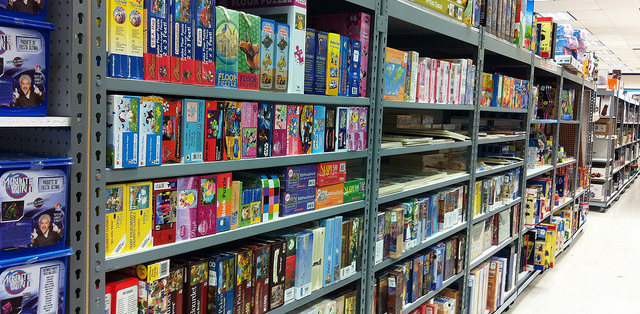Toy Companies Slowly Letting Go Of Strict Gender Categories

(C x 2)
The toy business can’t change instantly, but manufacturers are coming to realize that maybe making some Easy-Bake Ovens that aren’t purple means that they could sell more ovens. For example.
Target’s adventure in gender-neutral aisles began when a sign that said, “Girls’ Building Sets” annoyed a Twitter user.
Target can only make its aisles neutral to the extent that toy manufacturers do, though, and some kids will always like glittering ponies and others will always like plastic tanks. Even the LEGO aisle has the standard kits on one side and the less changeable playsets of the LEGO Friends on the other.
“The industry’s learned that you shouldn’t be labeling for a specific gender,” the editor of a toy review site explained to the New York Times. “There are so many girls who want to be Iron Man and Captain America, and boys who want to play with Easy-Bake.”
Parents occasionally take to social media to point out discrepancies, such as when a clothing company doesn’t offer dinosaur shirts for girls, because everyone likes dinosaurs, and there are now entire websites and Twitter and Facebook accounts devoted to the cause.
Sweeping Away Gender-Specific Toys and Labels [New York Times]
RELATED:
’70s LEGO Flyer Reminds Everyone Toy Used To Be Gender-Neutral
7-Year-Old Girl Questions ‘Fun Gifts For Boys’ Sign At Tesco
How To Make A Toy For Girls: Take Gender-Neutral Toy, Add Fairies And Flowers, Make It Purple
Want more consumer news? Visit our parent organization, Consumer Reports, for the latest on scams, recalls, and other consumer issues.

